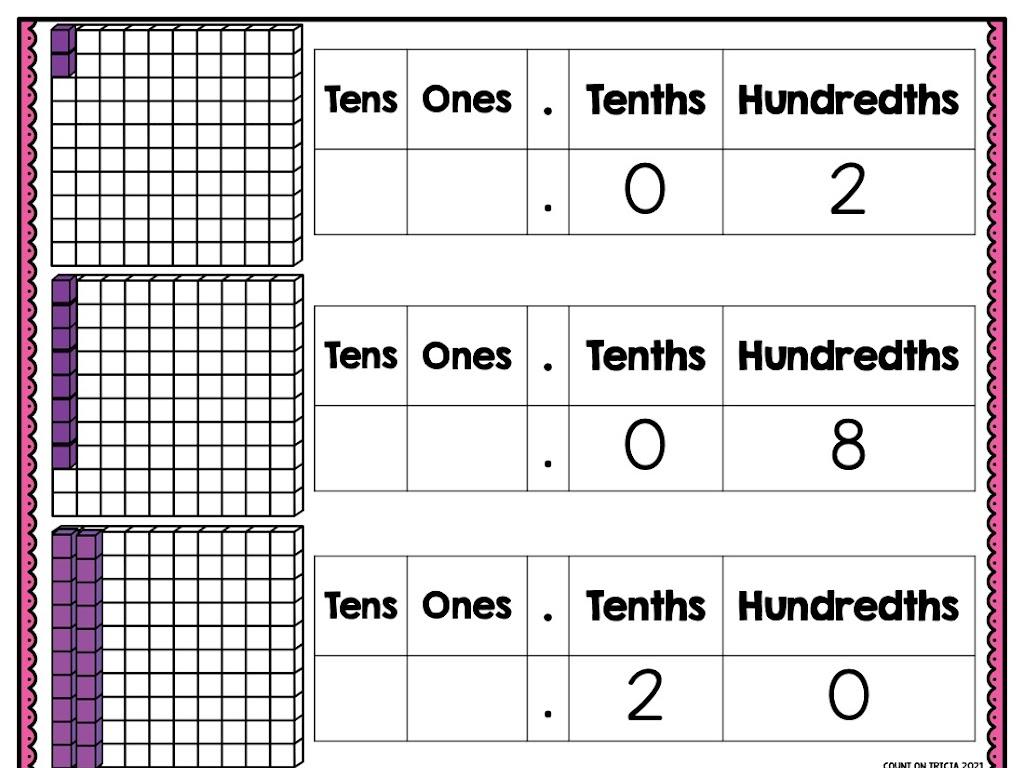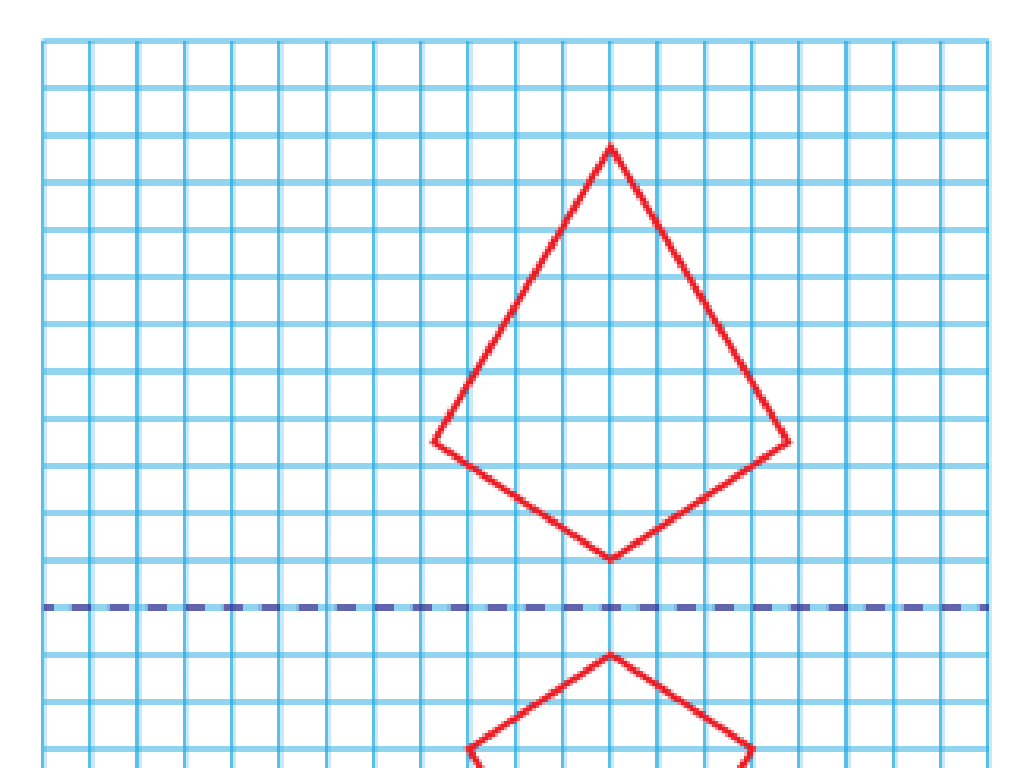Converse Of The Pythagorean Theorem: Is It A Right Triangle?
Subject: Math
Grade: Eighth grade
Topic: Pythagorean Theorem
Please LOG IN to download the presentation. Access is available to registered users only.
View More Content
Converse of the Pythagorean Theorem
– Recap of Pythagorean Theorem
– a^2 + b^2 = c^2, where c is the hypotenuse
– Characteristics of right triangles
– Right triangles have one 90-degree angle
– Applying theorem to right triangles
– If a^2 + b^2 = c^2 holds, the triangle is right
– Converse for identifying triangles
– If a triangle satisfies a^2 + b^2 = c^2, it’s a right triangle
|
Begin with a brief review of the Pythagorean Theorem, emphasizing that it applies specifically to right triangles. Explain that a right triangle is defined by having one angle that is exactly 90 degrees. Illustrate how, if a triangle’s side lengths meet the condition a^2 + b^2 = c^2, it confirms the triangle is right-angled. Introduce the converse of the Pythagorean Theorem, which states that any triangle with sides satisfying this equation is a right triangle. Provide examples to solidify understanding, and prepare to explore this concept further with exercises in class.
Converse of the Pythagorean Theorem
– Define the Converse Theorem
– If the square of the longest side equals the sum of the squares of the other two, it’s a right triangle.
– Contrast with Pythagorean Theorem
– Pythagorean Theorem proves right triangles, while the converse verifies if a triangle is right-angled.
– Using Converse to verify right triangles
– Check if a^2 + b^2 = c^2 for sides a, b, and c to confirm if a triangle is right-angled.
– Practical examples
– Apply the converse to real-life problems, like checking the squareness of a corner.
|
This slide introduces the Converse of the Pythagorean Theorem, which is used to determine if a triangle is right-angled. Unlike the Pythagorean Theorem, which calculates the length of a side in a right triangle, the converse helps us verify the nature of the triangle itself. Students will learn how to apply the converse theorem by checking if the sum of the squares of the two shorter sides equals the square of the longest side. Provide practical examples, such as using the theorem to ensure the corners of a rectangular frame are right-angled, to help students understand the application of the theorem in real life.
Converse of the Pythagorean Theorem
– Understanding the Converse
– If a^2 + b^2 = c^2 holds, then it’s a right triangle
– Walkthrough of example problems
– Identifying right triangles
– Use the Converse to check if a triangle with sides a, b, c is right-angled
– Class practice problem
– Solve: Is a triangle with sides 5, 12, 13 a right triangle?
|
This slide introduces the Converse of the Pythagorean Theorem, which allows students to determine if a triangle is right-angled by checking if the sum of the squares of the two shorter sides equals the square of the longest side. Begin with a clear explanation of the Converse, followed by a step-by-step walkthrough of example problems to demonstrate the concept. Next, guide students through the process of identifying right triangles using the Converse. Finally, present a practice problem for the class to solve together, ensuring to provide guidance and support. This interactive approach helps students apply the theorem and reinforces their understanding through practice.
Practice: Is It a Right Triangle?
– Solve individual problems
– Explain your reasoning
– How did you decide if it’s a right triangle?
– Review solutions together
– Learn from common mistakes
– We’ll discuss frequent errors to avoid
|
This slide is designed for students to apply the converse of the Pythagorean theorem to determine if a given triangle is right-angled. Provide a set of practice problems where students will calculate and compare the squares of the sides of triangles. Encourage them to articulate their thought process, which will help reinforce their understanding and allow you to correct misconceptions. After individual work, review the solutions as a class, highlighting the correct application of the theorem and addressing any common errors, such as miscalculating squares or misidentifying the longest side of the triangle. This collaborative review process will help students learn from their mistakes and from each other.
Group Activity: Triangle Investigation
– Form small investigation teams
– Receive a set of triangle cut-outs
– Apply the Converse to each triangle
– Use the Converse: If c^2 = a^2 + b^2, it’s a right triangle
– Determine which are right triangles
– Discuss findings within groups and note observations
|
In this group activity, students will collaborate to explore the Converse of the Pythagorean theorem. Each group will receive various triangle cut-outs and will use the Converse (c^2 = a^2 + b^2) to determine if they are right triangles. Provide guidance on how to measure sides accurately and calculate squares. Encourage groups to discuss their methods and findings. As an extension, students can create their own triangles and test them. Possible variations include using different materials, incorporating technology with geometry software, or challenging students to find real-life examples of right triangles.
Class Discussion: Exploring the Converse of the Pythagorean Theorem
– Groups present their findings
– Discuss application methods
– How did each group use the Converse to determine if a triangle is right-angled?
– Address misconceptions
– Clarify common misunderstandings and correct any mistakes
– Review correct approaches
– Reinforce the correct process and formula application
|
This slide is meant to facilitate a class discussion where students will share how they applied the Converse of the Pythagorean Theorem to determine if a given triangle is right-angled. Encourage groups to explain their methods and thought processes. During the discussion, pay attention to the variety of approaches and highlight the creativity in problem-solving. Address any errors in application or misconceptions about the theorem to ensure a solid understanding. Use this opportunity to review the correct approaches and reinforce the formula a^2 + b^2 = c^2, where c is the hypotenuse, and a and b are the other two sides of the triangle. Provide examples of both right and non-right triangles to illustrate the concept clearly.
Wrapping Up: Converse of the Pythagorean Theorem
– Recap: Converse of Pythagorean Theorem
– If a^2 + b^2 = c^2 holds, then it’s a right triangle
– Homework: Practice problems
– Solve problems to solidify understanding
– Next Topic: Pythagorean Applications
– Explore how to apply the theorem in real-life scenarios
– Keep practicing for mastery!
|
As we conclude today’s lesson on the converse of the Pythagorean theorem, remind students that this theorem helps us determine if a triangle is right-angled by checking if the sum of the squares of the two shorter sides equals the square of the longest side. For homework, assign problems that require students to apply this knowledge to different sets of numbers. This will help them to internalize the concept. In the next class, we will look at how the Pythagorean theorem is used in various real-life situations, which will help students appreciate the practical applications of what they’ve learned. Encourage students to practice as much as possible to achieve mastery, as understanding the converse is crucial for their success in geometry.






